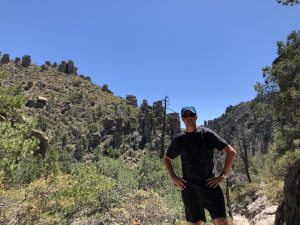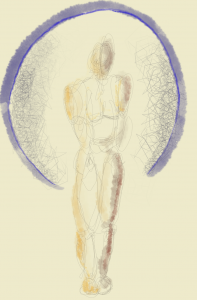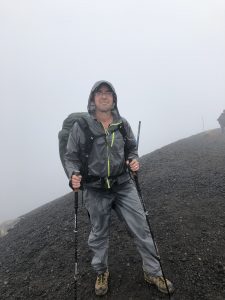Here is an experiment in poetry that is completely self-contained, encoded as a URL using an Ex-Googler’s itty.bitty website that composes HTML or ASCII content into a URL fragment using Lempel-Ziv-Welch (LZW) compression. Building a chain of self-contained references is not for the faint of heart, but basically involves back-tracking from the end. Each compressed HTML fragment is then embedded in the previous stanza, and so forth.
And the topic is, as it must be, language itself.
Here’s the raw, self-contained URL as a link, too:
https://itty.bitty.site/#/?XQAAAAIjBQAAAAAAAAAQDwmIAcJ7S/e0HRDveaJ/CvZuJSlLjEjE1GCJ5j7pW5xk6EiSIVmcubsQXjfOVGIIKFzXDux135EACaYtu/6Wm88vL+l57/7B3r54PHtC+oxIoKzEnDeFuR5WPk+F1tJ+fLgTg7mDFJJu+ndFIKrpSM9Y5RR4z26Yp6fFl1iYbC7x3ISSwr2H164+jV78LRUkR5b/Ze7vjXocXWNezEtToEjqPw2zQBNFZZ5SYia4pnpJjWzhjsatDnKWaFNSbTXlWbAxalkEYCiuNCQXJJd/YYL15JWi1yo0S+qK/DVCJGZKJ63Tjdye2dkscEwM9fto81/n4CrD8QDUuDPUAhQK2qDsTiRACBsW5F56ywr5uKpFBKdsmYhdVhBU/gD6srw9kGyCm0DT90/SsEA/tl+zzKtpS2xYzecZ9Mxj7moub+q8fdQo+WjKkpdi+FYk9IH/csGNSP18JkgNJlYwHSyQ9wwD3AYqmsyh2qMNj31q393baDGyZT2GfmCjJ9KD8bHtcXIQdGldR+60kPLprZvVu4maaPHUwyH7D/vZLnLzdp4DzusDFHSjOCZbzopEOrQJLYR9p+plVGOBtEXkxEVNlskO83kOByhVtD3c2zIrHocT4KL7kIplMSpEyFAW3OS8copbz7sLk2ZJAc/P2VIld9efw/i89RjMWPSKGlC0iKM7lv91OrBG535QqvipYv75C+NZcazVSYWZJiALmJ1oNTGYQE/l1Rbt6nqhX30YWDnrnflGFXAXTGd2WTY6kCCUtXKApyh+Go96ZAN3bnq4zCyH5bddVULMYpuFAUQsvlQo2usjDuzu7iba5gFV6bD+LIBL+L7o6aO+AcHfu38yAPsHJWGyNcmqsCAjqvxCRVPhrRk4HYb9sELoPkLU1/3LTVZyIXY/7ktMmLXX83ad7xxc7Vk3uv8Yw7BGDvL1u04RF6EkcGt77nMA9AnUYil2AK53vZzCT+SecWvhwovB7siCijT2viqsj1q9DqEz5mBLajt7HmwXS+d6w6YLHG7zSsoZn6Vo9pUtNJGriyQ9STYRzBUPBWCnv21YZ4vTQ84+BVCfpbTsegpBISY4zki5p6yF4XVhB7WVkaTFwzGJB/lX2/+ATPJYgZRhMDZeEVCGLfSY2qAk5u1eGCpXhZLS/frlUDYyoeNjnC/YeFsPAIkezdEu2tNi0vtZyCtABMfTF4XvKcT1PcbwzV9oPIq1m6fF+1rA9TrS2iyqXdjZ902RX3v3vz6PCn0xNmuqXbu/vx50++yyRLKnRYb70IT3Y6ID2em/dAHr+s3xZw5GtAqFsbojqjQnuw5TLG1PqEvX4lBeqwbjm+eXBANzFR3BDpOwC8Fpc3tt2qmTA3F2ivePu2QYNrEHkrsHO4kqd0rDCqKSml44R27NQjOaeUMnmkMAE/jjExfoAP466EA=
And here is the same as a QR Code:









